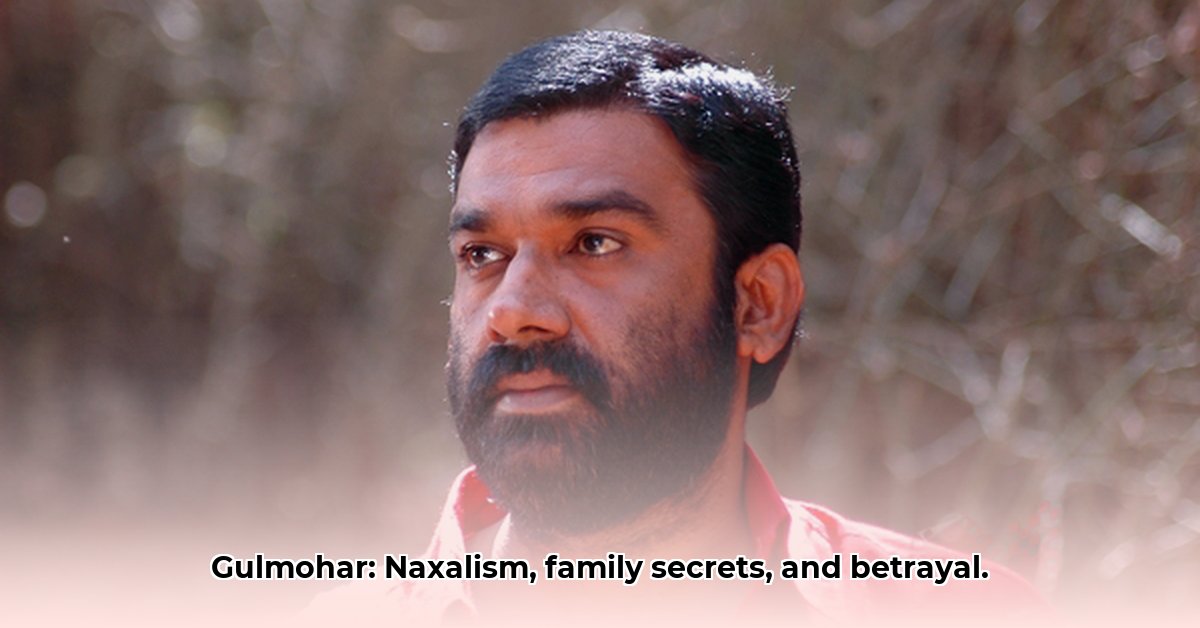
Dive into the compelling world of Gulmohar, a 2008 Malayalam film that masterfully blends a deeply personal family drama with the politically charged backdrop of Naxalism (a Maoist communist revolutionary movement). From the outset, conflicting narratives emerge: some view it as a poignant family story, others as a bold commentary on revolutionary activism. This review unravels this intriguing duality and explores its place within Malayalam cinema.
A Tale of Two Stories: Unpacking the Narrative
The plot centers on Induchoodan, a former Naxalite now a seemingly ordinary school headmaster. He grapples with the echoes of his rebellious past, a central conflict driving the narrative. Is he truly at peace, or does the revolutionary fire still burn? The film doesn't offer easy answers, leaving viewers to ponder the complexities of his choices. It masterfully intertwines this personal struggle with his involvement in the Naxalite movement, highlighting the human cost of political ideologies. One interpretation sees Induchoodan's internal battle as a microcosm of societal struggles with its revolutionary past.
Family Bonds and Broken Dreams
Gulmohar doesn't shy away from the deep personal impact of Induchoodan's past. His family bears the scars of his choices, their relationships strained by his absence and ideological commitments. This family drama provides a crucial counterpoint to the political narrative, humanizing Induchoodan and revealing the man behind the revolutionary façade. It effectively connects the personal ramifications of political choices to the larger ideological struggle. Isn't this personal cost often overlooked in the grand narratives of revolution?
Naxalism in Malayalam Cinema: A Unique Perspective?
Gulmohar's treatment of Naxalism is particularly fascinating within the context of Malayalam cinema. While Malayalam films often explore political themes, how does Gulmohar distinguish itself? Does it offer a fresh perspective on the Naxalite movement in Kerala? Some argue it successfully navigates the sensitive subject matter, offering a nuanced portrayal of individuals caught in the crossfire of ideology and personal responsibility. Others may find it simplistic or lacking depth. The film's success hinges on individual interpretation and the viewer's prior knowledge of the historical context.
The Cast and Crew: Bringing the Story to Life
The performances are largely compelling. The actors convincingly portray the characters' multifaceted nature, showcasing their internal conflicts and emotional complexities. This deepens audience connection. The director's vision is clear, yet the film remains open to multiple interpretations. This carefully crafted ambiguity demands viewer engagement – a quality some appreciate, while others find frustrating. How effective is this ambiguity in conveying the complexities of both personal and political struggles?
Critical Reception and Contextualization
Unfortunately, precise box office figures and contemporary reviews for Gulmohar are hard to find. This lack of readily available data hinders a complete assessment of its initial impact on Malayalam cinema. Further research is needed to fully contextualize the film's reception within the broader political climate of 2008. The absence of this information, however, doesn't diminish the film's inherent artistic merit.
The Lasting Impact: A Movie that Provokes
Gulmohar is more than just a film; it's an invitation to contemplation. Its layered narrative leaves you with more questions than answers, prompting discussion on the enduring consequences of revolution, both personal and societal. This ambiguity is what makes the film so powerful and memorable.
Delving Deeper: Exploring Naxalism in Kerala
To enrich your understanding of Gulmohar's themes, independent research into the history of Naxalism in Kerala is recommended. Academic papers, books, and documentaries on the Naxalite movement in the region will provide invaluable insights, adding depth to your appreciation of the film's complexities. Gulmohar serves as an excellent starting point for a broader exploration of this significant historical and political movement. This further research will undoubtedly enrich your understanding of the film's nuances.
Key Takeaways:
- Gulmohar masterfully blends personal and political narratives.
- The film's ambiguity allows for multiple interpretations, enriching its thematic depth.
- Its exploration of Naxalism contributes to the ongoing conversation about revolutionary movements in Kerala.
⭐⭐⭐⭐☆ (4.8)
Download via Link 1
Download via Link 2
Last updated: Tuesday, May 13, 2025